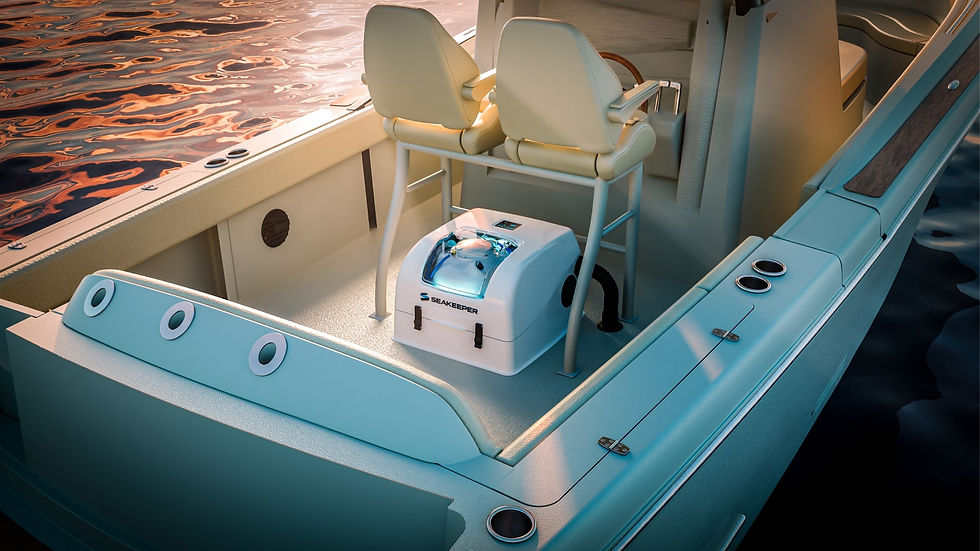A Bum Ride - The Search for Better Boat Seats
- Bill Jennings

- Nov 8, 2022
- 2 min read
It's a matter of time before manufacturers begin employing technology developed by the U.S. military
A bumpy boat ride is not fun.
While some boats ride more smoothly in rough water than others, only the largest of pleasure boats seem to be capable of smoothing out the bumps over waves that inevitably result in a sore rear end. Over the years I have seen several different design approaches to improve seat comfort, from springs in small boat seats, to hydraulic suspension in offshore performance boats. One company, Professional Components in British Columbia, manufactures what they call "Shockwave Seats" that provide shock mitigation that allow professionals and enthusiasts alike to push their boats to their limits. These Shockwave Seats seats can be purchased individually to replace OEM seating.
To date, all of these attempts to improve structural design for the seats used in high speed planing and semi-planing boats, use what is referred to as 'passive construction.' This means that the seat is designed to take up shock, but not utilize a computer network to adjust the seat to varying sea conditions. Such passive design methods rely almost completely on trial and error.
Good news -- naval architects have recently agreed that while this basic trial method for seat structures has been employed for many years, it is likely that a better physical understanding of the dynamic response of high-speed boats in lumpy seas would permit the development of a design with increased seat optimization.
And today, the advancements in a computational approach to predicting motions and loads in boats is now underway. The U.S. Naval Surface Warfare Center, in West Bethesda, Maryland, has been assigned the task of conducting such research. It would seem that bum bumping in boats will soon be cured.
According to Aerospace and Defence Technology reports, the NSWC objective was "to develop advanced wireless sensor networks to provide time-critical and precise localized environmental information, critical to decision making and operating high tech seats." I think this is the NSWC's way of saying 'make smart seats.' They focused their research on the results from testing in different waves at various speeds. In the course of the research, all six of the recognized watercraft motions in high seas were considered. These six motions are divided into two categories: Transitional (which are heave, surge and sway), and Rotational (which are pitch, roll and yaw). Robots were used to survey solar nodes in the network.
This model test provided validated computational fluid dynamics data for planing and semi-planing craft. These CFD predictions were evaluated in their ability to predict calm water performance, as well as motions and loads in regular and irregular waves. The degree of freedom forces and moments were noted over a range of speeds and wave conditions. These impact pressures are used to calculate optimum seat adjustments for the best ride at different speeds and wave conditions.
This may seem like just another improvement in boat design development, but delivering a steady comfortable ride has always been difficult for small craft. Once this smart seat technology is picked up by boat manufacturers, a whole new world of boating awaits us. #tips




















Comments